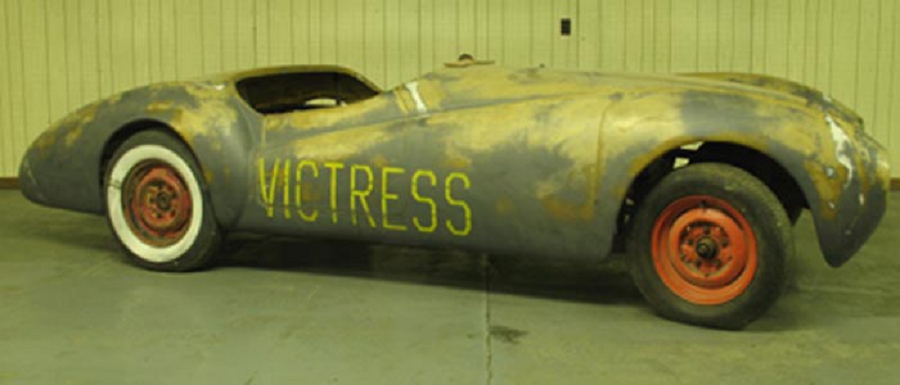
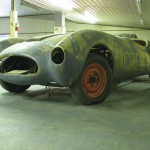
Great Front Shot of the Victress S1A – The Original Victress Primer (Grey) is Still Solidly On the Body
Hi Gang…
A fair number of Sports Specials have been surfacing in the past few years in need of restoration or completion. We’ve had great fortune that these cars survived in any way, shape, or form, so we welcome each and every one – in any condition found. Completing one of these cars in the 1950’s was no small task.
As I’ve mentioned in previous stories, the average amount of time it took to complete a car – once you purchased a body – was 2000 hours. That’s 50 weeks at 40 hours a week. I guess you would fit “paid work” into the remaining hours of the work week, once you decided to start.
Finished sports cars built in the 1950’s are nothing short of a testimony to the determination of the original builders, and back in the 1950’s, Harry Whipp was a typical 21 year old young adult – determined to start building his own sports car. Today’s story…The Harry Whipp Victress S1A.
Meeting Denny and Matt Lesky: The Ionia Hot Rod Shop
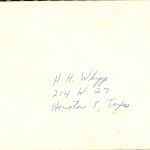
Original Brochure Ordered by Harry – Addressed by The Victress Crew Back in 1956 Directly to Harry Whipp.
I found out about this car several years ago when I met Denny and Matt Lesky. Matt had posted some information about a car of theirs on the HAMB – a discussion board that is part of the Jalopy Journal. The car he mentioned they had was a Victress – and I was glad when I finally was able to contact them and learn more about their car. We even had a chance to meet once on a car trip Denny was taking to Florida. Very good people here folks.
They had bought it from a friend, Paul Beck, who also lived in Michigan, and were hoping to restore it for themselves or perhaps for a friend or client. You see, Denny owns the “Ionia Hot Rod Shop” in Ionia Michigan, and he, his son, and their crew live and breathe building traditional hot rods for customers across the world.
Denny’s hot rods and customs have been featured in magazines, books, been the focus on covers, and have won awards across the country. Be sure to checkout their shop on the following link: Ionia Hot Rod Shop. The Victress is certainly in the right hands for the right action to be taken on its restoration.
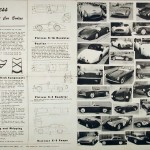
This Victress Brochure Was Unlike Any Other. It was “Poster” Sized and Showed Various Victress Components That Could Be Purchased to Finish Off any Victress Sports Car.
Finding Harry Whipp
Denny had learned that the car had been purchased from Harry Whipp some time before, and had some notes and original material confirming his name. With that information, research began.
I tracked down Harry a few years ago, and had a chance to talk with him at length and discuss his sports special again. Harry’s 75 years young, and was kind enough to spend some time teaching me about the car he bought back in 1956 – mid build. You see, in 1956 when he bought the Victress, he was already searching for a car to build – like many 21 year old men back then. The Victress S1A roadster body was one sexy car, and no doubt would be a hit when finished in any town across America.
Harry decided to order a Victress Brochure – something that is still with the car today – and it was the new large “poster” by Victress. It showed various models of finished Victress automobiles – all of them in their race car or sports car configuration. Some of the cars shown on the poster included the Bob Powell Victress S1A racecar, the Virgil Rice “Johnny Dark” Victress, and the S4 designed and built by Hugh Jorgensen. What a fantastic poster this is for any Victress enthusiast today!
Purchasing a Victress S1A Roadster
While Harry was considering whether or not to purchase a body directly from California – a funny thing happened. An S1A in mid-build became available near his home town in Texas. How could he pass up such an opportunity??? And so it came to pass…..Harry had his car, and he was ready to complete the build.
Let’s take a look at the car – in the condition today that it pretty much was in 1956 – a true time capsule.
Body: The Victress body is an S1A roadster. These were designed by Doc Boyce Smith and Hugh Jorgensen in 1951 and begin being put into production in 1952. Production continued thru 1961 when Victress was sold to LaDawri and the name of the car was changed at that time to “Cheetah”. We estimate approximately 75 to 100 Victress S1A bodies were built by both Victress and LaDawri from 1952 thru 1965 when LaDawri closed their doors.
Generation 1 Fiberglass Car: This body is a true “generation 1” fiberglass car. Rick D’Louhy and I are working on a specific definition that differentiates generation 1 fiberglass cars (1951 thru approximately 1956) from generation 2 fiberglass cars (1956-1969). One of the main differences is how the body was molded. Generation 1 cars were molded in one piece. This means that when the body was ready to be pulled out of the mold, it was pulled out intact. You had to cut the hood, doors, and trunk out of the body and begin the process of making them at that point.
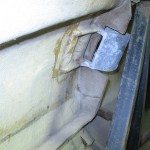
Victress Factory Door Hinges Are Installed on Both Sides of the Car. These Were Symetrical and Could Be Used on Either Door
Cast Aluminum Pieces: In order to support the hood, doors, and trunk, Victress cast their own hood/trunk hinges, door hinges, and 5 piece windshield posts too. This car has all original Victress aluminum pieces in place.
Scribe Lines: Not all early / generation 1 fiberglass companies did this – but Victress did with great precision. “Scribe lines” or indications where to cut were cast into the mold so that when the body was pulled out, you knew where to cut – and this could be repeated with precision in exactly the right place for hood, doors, and trunks cut at the Victress factory or by customers buying the body/frame kit to build their own cars. If a door, hood, or trunk weren’t needed, these lines were filled in during body preparation for paint.
Frame: The custom square tube frame was made by the person Harry bought the car from. Harry is still looking for the original bill of sale indicating the name – which he believes he has. The sides look strong and you can see where they created space for the driver’s seat to be the proper height with legrom for the driver too.
Suspension: The front suspension is 1946-1948 Ford with cross / transverse spring setup and split wishbones. The rear is later 1949 Mercury rear axle and longitudinal leaf springs with connection for open driveshaft – probably done for the drivetrain intended for the car which utilized an open driveshaft.
Drivetrain: Until recently, Harry Whipp still had the DeSoto Hemi that came with the car. Amazingly, he retains to this day the 1952 3 speed Studebaker manual transmission with overdrive, and the aluminum adapter plate connecting the DeSoto Hemi to the Stude transmission.
Mystery: And, of course, there’s the mystery of the name “Victress” painted on the sides and back of the car. When I spoke with the folks from Victress, they said “why would we paint the name of the car on the side of the body? We all knew what it was.”. Ok…they have a point. But….it still looks so nicely done, I wonder if we’ll find more raw Victress bodies with stenciled letters. So far though…we’ve found many bodies and pictures and this is the only one stenciled with the word “Victress”. It makes for a great “guess the name of this car” picture, though.
How Do We Thank Harry? Let Me Count The Ways…
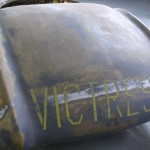
If You Look Carefully, You Can Still See The Scribe Lines for the Uncut Trunk in this Car. And….There’s No Doubt What The Car Is Too!
Although Harry didn’t finish the car, he stored it before selling it to Paul Beck for over 50 years. This is no small feat! And most of this time it was stored inside airplane hangers or secured garages too. Over the years, only the original seats have been lost and the windshield posts too. However, both are easily replaced. This car remains a great find and a treasure – no matter the condition today. Thanks, Harry, for saving such a gem for all of us to enjoy!
Epilogue:
Harry has offered to look for the final few links to the cars original history for us. He thinks he still has the bill of sale and other items too.
“It’s around here somewhere….I just have to find it after 50+ years of storage!”
– Harry recently told me. So…I wait hopeful we’ll learn one or two more pieces of information about this car that can be added to its history as the restoration begins.
Hope you enjoyed the story gang, and I think I can speak on behalf of “glassheads” everywhere that we look forward to this car being brought back (or forward) to life for all of us to appreciate as it was meant to be.
Glass on gang…
Geoff
——————————————————————–
Click on the Images Below to View Larger Pictures
——————————————————————-
| Technical Specifications | |
| Body |
|
| Designer |
|
| Body Work and Paint |
|
| Upholstery | |
| Frame |
|
| Suspension |
|
| Front Axle |
|
| Rear Axle |
|
| Driveshaft: (open/closed driveshaft) |
|
| Brakes |
|
| Engine (make/year) |
|
| Transmission (type/year) |
|
| Carburetion | |
| Displacement | |
| Horsepower (estimated) | |
| Dashboard / Gauges | |
| Steering Wheel | |
| Wheelbase |
|
| Track/Tread (front/rear) (distance between center line of tires) |
|
| Tire Size | |
| Wheels / Rims | |
| Curb Weight | |
| Top Speed (0-60) | |
| Door Configuration |
|
| Special Features |
|
- Original Brochure Ordered by Harry – Addressed by The Victres Crew Back in 1956 Directly to Harry Whipp.
- This Victress Brochure Was Unlike Any Other. It was “Poster” Sized and Showed Various Victress Models and Instructions On How To Build a Victress From Scratch, Too.
- Harry’s Niece and Her Husband Shown “Hamming it Up” in the Victress Before Harry Sold His Car.
- Great Front Shot of the Victress S1A – The Original Victress Primer (Grey) is Still Solidly On the Body
- Something You Rarely See – Both Factory Victress Hood Hinges Still in Place – A Sight to Behold!
- Victress Factory Door Hinges Are Installed on Both Sides of the Car. These Were Symetrical and Could Be Used on Either Door
- There’s No Doubt What the Name Of This Car is Called
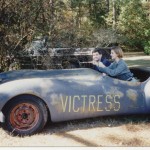
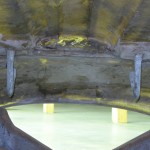

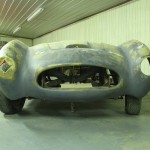
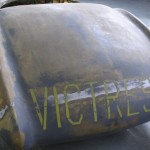
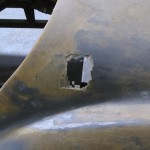
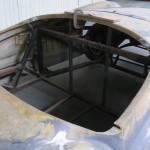
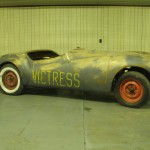
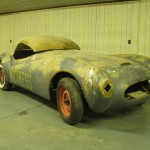
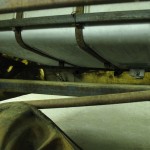
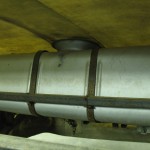
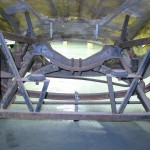
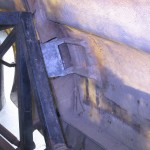
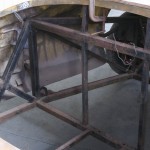
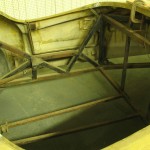
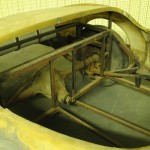
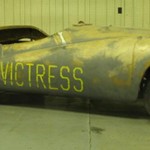
Looking for 1950-1960 V-8 or Jaguar Special to race in vintage. Glasspar, Willwood, Victress or other. Prefer vintage race or hill climb history.
Serious buyer.